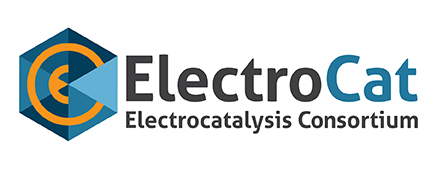| Laboratory: | Argonne National Laboratory |
| Capability Expert(s): | Ted Krause, Magali Ferrandon, and Debbie Myers |
| Capability Details: | |
| Title: | High-throughput synthesis of PGM-free catalysts and electrodes |
| Class: | Processing/manufacturing |
| Description: | Argonne’s High-Throughput Research Laboratory (HTRL) has two robotic platforms with solid and liquid handling, cooling and heating, and dispensing capabilities. One platform is in an inert atmosphere for air sensitive synthesis of materials (CM3, Unchained Labs, formerly known as Freeslate) and the other with an air atmosphere for non-air sensitive synthesis (CM Protégé, Unchained Labs). These robotic systems can be used for the high-throughput synthesis of the catalyst precursor powders. A liquid batch reactor system (SPR, Unchained Labs) allows for treatments of powders and/or suspensions with gas at high pressure and temperature. Argonne has also developed methods for the high-throughput pyrolysis of these precursor materials and high-throughput acid-treatment and rinsing. The robotically-controlled liquid (micro-pipettes) and solid dispensing platforms can also be used for synthesis and deposition of catalyst-ionomer inks. The HTRL’s robotic systems are equipped with custom-made software to facilitate high-throughput experimental design, data mining, and evaluation of results. |
| Capability Bounds: |
The CM3 (air-sensitive synthesis) and CM Protégé (non-air sensitive synthesis) robotic platforms can accommodate multiple array formats, specifically 24-, 48- or 96-well plates. Both platforms can perform (i) gravimetric dispensing of solids of varying bulk densities in quantities ranging from 1 mg to the gram level, and (ii) volumetric dispensing of solvents, solutions and slurries of various viscosities (up to 1000 cP) ranging from 10 μL to 5 mL by aspiration to within ±4% of the dispensing volume. In addition, for the CM3, on-deck mixing, heating and cooling are available with temperature control ranging from -20°C to 150°C. A conductivity probe and a vial capping/decapping station are also present on the CM3 deck. A vertical shaker is located on the deck extension of the CM3 platform and supports powerful agitation, wet milling of solids, and fluidization during impregnation. In addition, a vortexer that can handle multi-well plates is also available for wet milling of aqueous-based media. The SPR system is designed to carry out pressure treatments/reactions with heating and orbital shaking. It processes a set of samples (array of 24 vials of 4 mL or 48 vials of 2 mL), exposing them to a controlled gas mixture under specified conditions of pressure (up to 3000 psig), temperature (up to 400°C) and shaking (100-800 rpm). The reactor is connected to three mass flow controllers with a maximum flowrate of 1L/min each. Typical gases to be used are O2, H2, CO, CO2, light hydrocarbons such as CH4, and inert gases such as N2. |
| Unique Aspects: | Argonne’s High-Throughput Research Laboratory is unique in the national laboratory system in its breadth and variety of instrumentation. The HTRL researchers have broad expertise in utilizing the unique instrumentation in the areas of catalysis, energy storage, fuel cells, artificial photosynthesis, gas separation and storage, and nanoscale materials. |
| Availability: | The high-throughput research laboratory is a capability within Argonne’s Chemical Sciences and Engineering Division and is available to a resource both within Argonne and to collaborators from outside organizations. |
| References: | “High-Throughput Synthesis, ORR Activity Modeling, and Testing of non-PGM PEMFC Cathode Catalysts,” Deborah J. Myers (Primary Contact), Xiaoping Wang, Sheldon Lee, Magali Ferrandon, Nancy N. Kariuki, and Theodore Krause, FY 2015 Progress Report for the Hydrogen and Fuel Cell Technologies Office, U.S. Department of Energy. |
| Benefit: | The high-throughput combinatorial synthesis and screening of various chemical compositions and pyrolysis treatments can accelerate the identification and development of new PGM-free electrocatalysts with targeted ORR activities and stability. Variables such as the metal, polymer, and carbon content, as well as the temperature and atmosphere in which the PGM-free precursors are pyrolyzed, are important in determining the activity and stability of PGM-free catalysts. Changing these variables and testing their effect on the resulting catalyst properties is a very time-consuming process and only a limited portion of the composite composition, atmosphere, and temperature space has been explored. The exploration of variable space toward the goal of discovering a more active and stable PGM-free catalyst for fuel cell applications can be accelerated using a high-throughput/combinatorial approach. The robotic apparatuses described here can be used to rapidly fabricate catalyst precursor composites with, for example, varying carbon, polymer and metal content, as well as bimetallic metal ratios, and the pyrolysis and post-treatment capabilities can be used to rapidly explore the temperature space. |

